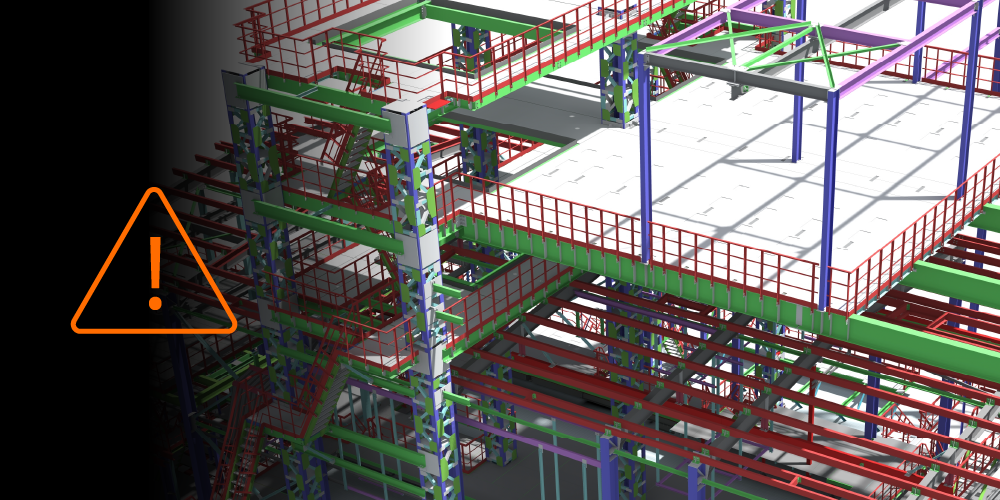Related Articles
— 10 min read
Leading and Lagging Indicators in Construction: How to Improve Safety and Performance

Last Updated Sep 30, 2025

Josh Krissansen
47 articles
Josh Krissansen is a freelance writer with two years of experience contributing to Procore's educational library. He specialises in transforming complex construction concepts into clear, actionable insights for professionals in the industry.
Last Updated Sep 30, 2025

Injury and claims rates may be falling, but construction’s status as one of Australia’s most dangerous industries remains untouched.
Yet, when leading indicators are tracked consistently, there is clear evidence of accident reduction because companies doing so commit to a balanced approach to protecting their workforce, strengthening compliance, reducing project delays, and cutting costs.
If that’s the case, why does adoption remain inconsistent?
The answer lies in the uncertainty of ROI, a lack of leadership commitment, and overreliance on lagging indicators as the sole safety measure. While this widens the gap between best practices and practical application, it also presents an opportunity for construction professionals.
This article explores how construction leaders can close that gap and use performance indicators to drive safer and more profitable projects.
Table of contents
What are Leading and Lagging Indicators in Construction?
Construction has the highest preventable injury-related fatality rate of any industry. Too often, safety programs only react once an incident has already occurred, meaning the opportunity for prevention has already passed.
Leaders need to understand the two categories of indicators that shape performance to move beyond reaction. One highlights risks before they escalate. The other measures results after the fact.
Together, they provide the foundation for stronger prevention and continuous improvement.
Leading Indicators: Act Early to Avoid Problems
Leading indicators are proactive measures that highlight risks before they escalate. Research shows they are far more predictive of safety outcomes than lagging data, with experts weighing the split between the two at roughly 80 percent leading to 20 percent lagging.
The most influential factors include management commitment, safety training, risk management, and clear safety rules.
When these inputs are tracked consistently, teams can intervene early, maintain tighter control, and avoid costly problems. For example, cash flow forecasting highlights future shortfalls so contractors can adjust spending before delivery is compromised.
Lagging Indicators: Learn From Past Actions
Lagging indicators measure performance after the fact.
They capture results and outcomes, showing whether earlier actions were practical. A high rate of rework, for instance, signals that quality issues were not prevented during planning.
While less predictive, lagging data remains essential. It verifies whether safety systems delivered the intended results and highlights areas that require reinforcement.
Used alongside leading indicators, it provides accountability, benchmarking, and proof of effectiveness.
Examples of Leading and Lagging Indicators in Construction
A Monash survey shows one in three workers remain at risk, and serious incidents still occur despite stronger systems and regulations.
The gap between falling injury rates and persistent site risks is determined by what is measured. Indicators only add value when they shape daily decisions.
The following examples highlight the measures that reveal risks early and confirm whether safety systems are truly working.
Examples of Leading Indicators
- Percentage of safety training completed by staff: Shows if the workforce is prepared to manage construction risks
- Number of hazard or near-miss reports filed each month: Highlights potential dangers before they escalate
- Frequency of toolbox talks or site inspections conducted: Confirms that risk management processes are ongoing
- Audit scores for site safety compliance: Verifies adherence to internal standards and WHS duties in real time
- Maintenance checks completed on equipment: Reduces the chance of breakdowns and delays
- Employee safety observations or interventions recorded: Encourages active monitoring and corrective action
Examples of Lagging Indicators
- Lost Time Injury Frequency Rate (LTIFR): Shows how often injuries stop work from progressing
- Total Recordable Injury Frequency Rate (TRIFR): Measures the overall effectiveness of safety practices
- Number of fatal accidents in a year: Reflects the most severe safety failures
- Number of serious incidents or injury claims: Identifies costly outcomes that need investigation
- Average accident cost per project: Quantifies the financial impact of safety performance
- Days since last injury displayed on site: Indicates the project’s current safety track record
Knowing which indicators to track is a good first step. To gain buy-in, teams must understand why they matter and how the numbers translate into safer outcomes.
Why Leading and Lagging Indicators Matter
Workplace injuries and illnesses cost Australia $61.8 billion each year and affect more than half a million workers. These are more than mere statistics. They represent preventable risks that continue to affect projects and people across the industry.
Preventing even a fraction of that impact requires more than tracking incidents after they happen.
Early Warning Signs
Leading indicators act as early alerts that expose risks before they result in harm.
A fall in the number of safety inspections signals lapsing oversight long before injury rates climb. Metrics such as hazard reports and toolbox talks highlight systemic issues that lagging data cannot reveal until after incidents occur.
Measuring Actual Performance
Lagging indicators serve as the safety scorecard. They show the number of injuries, their severity, and whether safety programs are effective. Rates such as LTIFR and TRIFR provide a clear record of outcomes.
Identifying Trends and Problem Areas
Analysing lagging data over time reveals patterns even when incident counts are low. Companies may see recurring spikes at specific project phases or during certain seasons.
These insights direct resources to the areas of highest risk.
Continuous Improvement and Safety Culture
Leading indicators drive a culture of improvement by encouraging teams to look ahead. Regular tracking engages both workers and management in proactive safety conversations. Tools such as hazard reporting and toolbox talks build accountability into daily site activity.
Benchmarking
Lagging indicators allow performance to be compared internally and against industry peers.
Standardised measures such as LTIFR and TRIFR enable meaningful benchmarking across projects and contractors. Benchmark data highlights whether a company is leading, meeting, or falling behind industry standards.
Performance and Cost Benefits
Preventing incidents reduces medical expenses, lost productivity, project delays, and insurance premiums. Strong leading metrics improve safety records and enhance profitability. Investing in prevention delivers long-term financial benefits by avoiding the much higher cost of accidents.
Combining Leading and Lagging Indicators into a Composite Safety Performance Indicator
Construction teams often struggle to get a clear picture of safety performance.
Lagging indicators dominate reporting because they are easier to measure, but do little to prevent incidents. Meanwhile, leading indicators do fill the gaps created by lagging indicators, but issues like data collection fatigue, inconsistent reporting, and weak buy-in often make their results unreliable.
There’s also the issue of ‘usability’: executives tend to focus on compliance, while site managers push for prevention, leaving teams misaligned.
The result is a patchwork of incomplete data that can mislead effective decision-making.
Why No Single Indicator Gives a Complete Picture
A systematic review of safety indicators in construction shows that no single measure is enough. Toolbox talks, for example, predict far more when combined with safety climate monitoring than when tracked in isolation.
At a system level, the solution is to combine leading and lagging indicators into a composite safety performance indicator. Each is incomplete on its own. Together, they balance forward-looking potential with historical accountability.
In a paper on using leading and lagging indicators to select safe contractors, Liang et al demonstrated the risk of relying on one side alone.
Contractors ranked very differently on a high-speed railway project depending on the evaluation system used. One scored well on leading indicators but poorly on lagging indicators, weaknesses that would have gone unnoticed without the composite approach.
How To Build a Composite Safety Performance Indicator
Liang et al’s research provides a practical model for owners and clients.
The composite safety performance indicator, or c-SPI, blends leading and lagging measures into a single score that can be applied at the prequalification stage. This allows safer contractor choices and stronger project outcomes.
- Identify critical indicators: Prioritise the factors that have the greatest influence on outcomes, such as management commitment, safety training and education, safety risk management, and safety rules and procedures.
- Weight each indicator: Assign greater weight to leading indicators, which are more predictive of future outcomes, while still including lagging indicators for accountability. A practical balance is to give roughly 80% of the weighting to leading measures and 20% to lagging measures.
- Aggregate into a single score: Bring the indicators together into one composite score that can be compared across contractors or projects.
Closing the Gap: Applying Indicators for Real Safety Gains
Tracking indicators sounds straightforward: counting toolbox talks, recording near misses, and calculating LTIFR and TRIFR. In reality, data is often scattered across systems, defined inconsistently, or treated as a box-ticking exercise.
Until those gaps are closed, indicators remain numbers on a page rather than tools for prevention. The steps below show how to turn them into real safety improvements.
Break Down Data Silos By Centralising Systems
Safety data is scattered across apps, spreadsheets, HR systems, and even paper logs on many sites. Managers waste hours consolidating information, and the insights are already outdated by the time it reaches leadership. That delay erodes trust in the numbers and makes indicators feel like an administrative burden rather than a decision-making tool.
A stronger approach is to centralise data collection and reporting.
Mobile apps allow hazard reports and toolbox attendance to be captured in real time, reducing the risk of lost or delayed information. Dashboards then bring leading and lagging measures together in one place, so supervisors can see whether proactive actions reduce incidents.
In this model, lagging indicators serve as validation. They are no longer the primary measure but confirm whether leading actions, such as inspections and near-miss reports, translate into safer outcomes.
Eliminate Inconsistency Through Standardised Metrics
Inconsistency is a constant frustration. One contractor might record weekly toolbox talks, while another tracks attendance per talk. The result is data that cannot be compared across sites or rolled up for portfolio-level reporting.
Standardising how indicators are defined and reported solves this problem.
Create a company-wide template that clearly sets out what is measured and how. Liang et al’s research recommends weighting indicators at eighty percent leading and twenty percent lagging, echoing Bergh’s eight-to-two ratio. This balance focuses on predictive measures such as near-miss reports and safety audits, while still including outcome metrics like Lost Time Injury Frequency Rate (LTIFR) and Total Recordable Injury Frequency Rate (TRIFR).
LTIFR measures how often injuries stop work from progressing, while TRIFR captures the total number of recordable injuries across a given period. With clear definitions and consistent weighting, benchmarking across projects becomes accurate and meaningful.
Connect Metrics To Outcomes To Prove Impact
Executives often dismiss leading indicators because the link to outcomes is unclear. Recording inspections or toolbox talks feels like paperwork if it cannot be tied directly to fewer incidents or lower claims. Site teams lose motivation when they do not see the payoff.
Close the loop by linking indicators to results.
Use near-miss reporting and safety audits as red flags to show where controls are failing. Track those alongside lagging data, such as LTIFR trends, to prove whether corrective actions are reducing incidents.
Here’s an example: if a drop follows increased reporting of near misses in rework or injuries, the link is clear. Presenting this evidence in monthly management reviews helps executives see the value of proactive tracking and secures ongoing support.
Overcome Short-Term Pressures By Building Engagement
Field crews are under constant pressure to deliver on time. Filling out hazard cards or logging toolbox attendance can feel like time away from tools. This short-term workload discourages teams from consistently reporting leading indicators, even though they are the most predictive of long-term safety.
Golabchi et al’s systematic review showed that the most powerful indicators are about people and culture, not just checklists.
Worker involvement, open communication, and safety climate, meaning how safe workers feel on site, were found to be more strongly tied to outcomes than surface-level metrics like the number of inspections completed. Indicators focused on behaviour and engagement consistently outperformed checkbox-style compliance.
To build that engagement, post safety scoreboards on site, recognise workers for hazard reporting, and use toolbox talks as two-way conversations rather than top-down lectures. When teams see that their input is valued and tied directly to safer outcomes, participation rises and data quality improves.
Leading and lagging indicators strengthen safety and business performance
Leading and lagging indicators give construction leaders the tools to prevent risks, measure outcomes, and refine strategy. Used together, they build safer projects, reduce costs, and drive stronger performance across Australian commercial construction.
Categories:
Written by

Josh Krissansen
47 articles
Josh Krissansen is a freelance writer with two years of experience contributing to Procore's educational library. He specialises in transforming complex construction concepts into clear, actionable insights for professionals in the industry.
View profileExplore more helpful resources

Managing Direct Costs in Construction: How Visibility Drives Profitability
Direct costs define the financial reality of every construction project. They cover the labour, materials, and equipment that drive delivery and determine profitability. But even the best-planned budgets can shift...

BIM Clash Detection: Reducing Rework, Delays, and Risk in Construction
Design clashes can be a significant hidden cost in construction, as each conflict between systems risks expensive rework, project delays, and reduced margins. BIM clash detection empowers teams to identify...

Next-Gen Job-Costing: Ready to Move? 5 Things to Consider Before You Get Started
In this three-part series, Quantity Surveyor turned Financial Solutions Specialist Clint Burgess uncovers the real-world gains for people, processes, and profits when businesses move from legacy to next-generation Enterprise Resource...

From Workarounds to Workflow: Solving Construction’s Legacy Job-Costing System Challenges with Next-Gen Tools
In this three-part series, Quantity Surveyor turned Financial Solutions Specialist Clint Burgess uncovers the real-world gains for people, processes, and profits when businesses move from legacy to next-generation Enterprise Resource...
